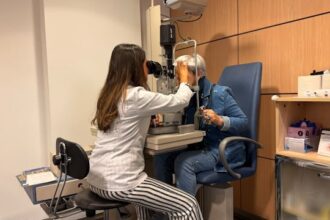As flu season approaches and vaccination campaigns begin once again, a long-standing challenge comes back into focus: vaccines often do not work as effectively for older adults, particularly those aged 65 and above. Scientists at the Allen Institute have been working to understand why this happens, and their findings are offering new ways to improve vaccine effectiveness later in life. Instead of viewing weaker immune responses as an inevitable decline, the research suggests that the immune system changes in patterned, predictable ways as we age, opening the possibility of targeted solutions that could help vaccines work better for everyone.
The study, published in Nature, is the largest of its kind and focuses on T cells, which play a central role in coordinating immune responses. These cells help B cells produce antibodies that fight viruses and make vaccines more effective. For a long time, researchers believed that chronic inflammation or accumulated health conditions were the leading causes of reduced immune responses in older adults. However, the new findings indicate that, even in healthy ageing, T cells undergo a significant functional shift. This change is not random or simply damage from illness, but rather a fundamental and universal feature of the ageing immune system.
Researchers found that memory T cells in older individuals shift toward a “Th2-like” state, altering the signals they send to B cells. As a result, even when a vaccine delivers the correct viral material, the immune system may struggle to mount a strong antibody response. Lead author Claire Gustafson, PhD, noted that these findings challenge assumptions about the role of inflammation, suggesting that inflammation and immune ageing are not as closely linked as once believed. Instead, immune cells behave differently as we grow older, shaping how effectively the body can respond to vaccines such as the annual flu shot or COVID-19 boosters.
This insight has important implications for future vaccine design. Instead of relying on a single vaccine formulation for people of all ages, researchers may be able to tailor vaccines to account for age-related immune changes. Doctors might one day evaluate a person’s immune profile to predict how well they will respond to a vaccine, allowing for more personalised immunisation strategies. Scientists are also exploring whether immune cells could be adjusted or “retrained” before vaccination. Technologies such as CRISPR, already used in therapies like CAR-T for cancer, could in the future be applied to reprogramme ageing immune cells so they respond more like younger ones.
The conclusions of this study are based on extensive data. Scientists worked with more than 90 healthy adults aged 25 to 65 over 2 years, using advanced techniques such as single-cell RNA sequencing and proteomics to observe how immune cells changed. They then created the Human Immune Health Atlas, an extensive online resource that maps seventy-one types of immune cells across age groups. By analysing more than 16 million immune cells from adults aged 90 and older, the team assembled an unprecedented picture of how immune ageing unfolds. This resource is freely available and is already expected to support future research worldwide.
The significance of this work extends beyond seasonal vaccines. It provides a clearer understanding of how the immune system changes across the lifespan and offers concrete targets for maintaining immune health as we age. As researchers continue exploring this dataset, they hope to uncover further insights that may reshape how medicine supports older adults in staying healthy, resilient, and protected.
More information: Claire Gustafson et al, Multi-omic profiling reveals age-related immune dynamics in healthy adults, Nature. DOI: 10.1038/s41586-025-09686-5
Journal information: Nature Provided by Allen Institute








